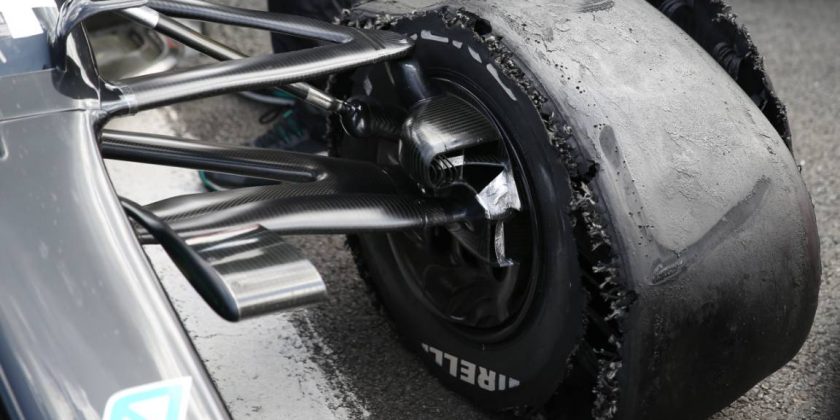Formula 1 chief technical officer Pat Symonds is eager not to see a repeat of Pirelli’s bursting tyres and doesn’t want them to be a factor in making the sport entertaining.
The British Grand Prix at Silverstone ended in an incredibly dramatic fashion as race winner Lewis Hamilton held on for the win despite only having three functioning tyres on his black Mercedes W11 car.
Silver Arrows team-mate Valtteri Bottas and Carlos Sainz also suffered late tyre punctures as the Pirelli compounds struggled to cope with the load amid the searing hot track temperatures at the iconic British circuit.
The FIA’s response was to reduce downforce levels by five per cent in 2021 to help ease the pressure on the tyres and more tweaks to the regulations has ensured downforce levels will drop further next year.
This is a move Symonds supports as he wants Formula 1 to be memorable for good racing instead.
“I think that our primary concern is to have good racing, and good racing requires that we have safety,” said Symonds via Motorsport.com.
“And so the moves that have been made, which we’ve been fully involved with all the way, I think, are very pragmatic.
“The events of Silverstone may have been very dramatic, but they’re not really what we want to make dramatic races here. A lot of other things that can provide dramatic racing without that sort of level of drama.”
FIA’s technical head of single seaters, Nikolas Tombazis, also wanted to reassure everyone that the response to Silverstone is not because the current Pirelli tyres are not safe to race on.
“I’d just like to stress that safety doesn’t in any way imply that the tyres are not safe,” he said.
“The car and tyres are a unit, a single unit working together.
We will have the tyres next year for the third consecutive year, which is an anomaly, of course, because of the COVID crisis, and because of the very intense race schedule that we have now, which has made any testing impractical for new constructions.
“And in the meantime, we have the aerodynamic teams of each F1 team working hard to make the cars more competitive, and finding downforce.
“So that’s the reason for our intervention, and it’s and we believe that’s more or less going to make sure that next year’s cars are going to have slightly lower downforce than this year ,but not a huge amount less after all the development.
“And therefore, we will be a bit safer than this year, but certainly a lot safer than we would be if we had done no intervention at all.”
Source: Read Full Article

